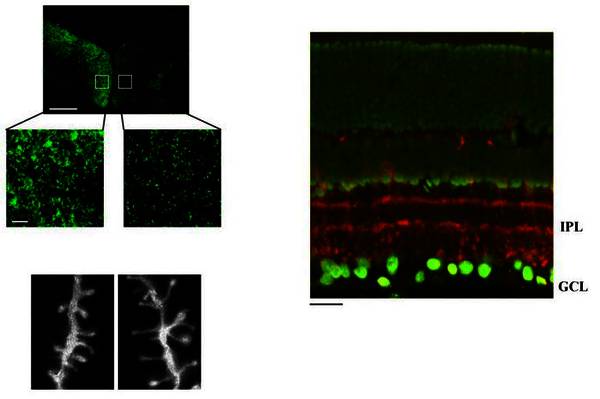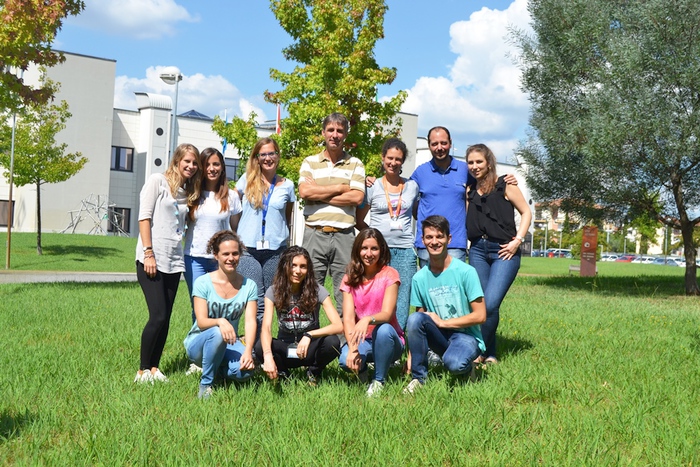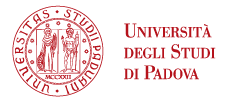
Plasticity In Pathology


The main goal of the laboratory is to characterize the plastic modifications of neuronal connections occurring in brain pathologies. The laboratory has a strong expertise in activity-dependent plasticity of the rodent visual system. Recently, the range of topics and techniques has expanded to include studies on different brain pathological conditions (stroke, brain tumors, epilepsy). A characteristic feature of the laboratory is the exploitation of specific bacterial toxins (such as botulinum neurotoxins, tetanus neurotoxin, and cytotoxic necrotizing factors) for studies of brain physiology and pathology. Our research relies on combining different electrophysiological (single unit, field potential and EEG recordings), opto/chemogenetic, neuroanatomical, behavioral and neurochemical approaches in vivo.
Currently, research in the lab can be divided into four themes:
- Neuroplasticity in stroke and effects of combined rehabilitation protocols
- Bidirectional interactions between glioma cells and peritumoral neurons
- Plasticity in epilepsy
- Mechanisms of action of clostridial neurotoxins such as botulinum neurotoxin A (BoNT/A)

People
Faculty
- Gabriele DEIDDA - Assistant Professor
Lab Members
- Stefano VARANI - Post-doctoral fellow
Collaboration
- Pierre Billuart, Institute Cochin, Paris (X-linked intellectual disability)
- Yuri Bozzi, Università di Trento (epilepsy)
- Marco Canossa, Università di Bologna (neurotrophins)
- Antonino Cattaneo, Scuola Normale Superiore, Pisa (plasticity and optogenetic tools)
- Marco Cecchini, Istituto di Nanoscienze CNR (Krabbe disease)
- Federico Cremisi, Scuola Normale Superiore (neural stem cells)
- Bazbek Davletov, Sheffield, UK (clostridial toxins)
- Maria Grazia De Simoni, Mario Negri, Milano (stroke)
- Claudio Giachino, Basel, Switzerland (glioma)
- Carla Fiorentini, ISS, Roma (CNF1)
- Leonardo Fogassi e Luca Bonini, Università di Parma (motor system)
- Magdalena Gotz, Helmholtz Zentrum, Munich, Germany (neural stem cells)
- Michela Matteoli, Humanitas Milano (glioma)
- Chiara Mazzanti e Liam McDonnell, Fondazione Pisa (glioma)
- Alberto Mazzoni, Scuola Sant’Anna, Pisa (glioma)
- Silvestro Micera, EPFL, Lausanne (stroke and robotic rehabilitation)
- Cesare Montecucco e Ornella Rossetto, Università di Padova (clostridial toxins)
- Francesco Pavone, LENS, Firenze (stroke)
- V. Hugh Perry, Southampton, UK (epilepsy and inflammation)
- Giampietro Schiavo, UCL, London, UK (clostridial toxins)
- Gudula Schmidt, Freiburg, Germany (CNF1)
Five recent publications
(*, equal contribution as senior authors)
- Caleo M, Spinelli M, Colosimo F, Matak I, Rossetto O, Lackovic Z, Restani L (2018) Transynaptic action of botulinum neurotoxin type A at central cholinergic boutons. J Neurosci 38(48): 10329-10337.
- Terrigno M, Busti I, Alia C, Pietrasanta M, Arisi I, D’Onofrio M, Caleo M*, Cremisi F* (2018) Neurons generated by mouse ES cell with hippocampal or cortical identity display distinct projection patterns when co-transplanted in the adult brain. Stem Cell Rep 10(3): 1016-1029.
- Spalletti C, Alia C, Lai S, Panarese A, Conti S, Micera S*, Caleo M* (2017) Combining robotic training and inactivation of the healthy hemisphere restores pre-stroke motor patterns in mice. eLife 6: e28662.
- Vannini E, Olimpico F, Middei S, Ammassari-Teule M, de Graaf EL, McDonnell L, Schmidt G, Fabbri A, Fiorentini C, Baroncelli L, Costa M, Caleo M (2016) Electrophysiology of glioma: a Rho GTPase-activating protein reduces tumor growth and spares neuron structure and function. Neuro-Oncology 18: 1634-1643.
- Cerri C, Genovesi S, Allegra M, Pistillo F, Puentener U, Guglielmotti A, Perry VH, Bozzi Y*, Caleo M* (2016) The chemokine CCL2 mediates the seizure enhancing effects of systemic inflammation. J Neurosci 36: 3777-3788.
- Deidda G, Allegra M, Cerri C, Naskar S, Bony G, Zunino G, Bozzi Y, Caleo M*, Cancedda L* (2015) Early depolarizing GABA controls critical period plasticity in the rat visual cortex. Nat Neurosci 18(1): 87-96.
- Mazzocchio R, Caleo M (2015) More than at the neuromuscular synapse: actions of botulinum neurotoxin A (BoNT/A) in the central nervous system. Neuroscientist 21(1):44-61.
- Lai S, Panarese A, Spalletti C, Alia C, Ghionzoli A, Caleo M*, Micera S* (2015) Quantitative kinematic characterization of reaching impairments in mice after a stroke. Neurorehabil Neural Repair (in press).
- Spalletti C, Lai S, Mainardi M, Panarese A, Ghionzoli A, Alia C, Gianfranceschi L, Chisari C, Micera S, Caleo M (2014) A robotic system for quantitative assessment and post-stroke training of forelimb retraction in mice. Neurorehabil Neural Repair 28(2): 188-196.
- Restani L, Giribaldi F, Manich M, Bercsenyi K, Menendez G, Rossetto O, Caleo M, Schiavo G (2012) Botulinum Neurotoxins A and E Undergo Retrograde Axonal Transport in Primary Motor Neurons. PLoS Pathog 8(12): e1003087.
- Cappello S, Böhringer CR, Bergami M, Conzelmann K-K, Ghanem A, Tomassy GS, Arlotta P, Mainardi M, Allegra M, Caleo M, van Hengel J, Brakebusch C, Götz M (2012) A Radial Glia-Specific Role of RhoA in Double Cortex Formation. Neuron 73(5): 911-24.
- Restani L, Antonucci F, Gianfranceschi L, Rossi C, Rossetto O, Caleo M (2011) Evidence for anterograde transport and transcytosis of botulinum neurotoxin A (BoNT/A). J Neurosci 31(44): 15650-15659.
- Cerri C, Fabbri A, Vannini E, Spolidoro M, Costa M, Maffei L, Fiorentini C, Caleo M (2011) Activation of Rho GTPases triggers structural remodeling and functional plasticity in the adult rat visual cortex. J Neurosci 31(42): 15163-72.
- Restani L, Cerri C, Pietrasanta M, Gianfranceschi L, Maffei L, Caleo M (2009) Functional masking of deprived eye responses by callosal input during ocular dominance plasticity. Neuron 64(5): 707-718.
- Caleo M (2009) Epilepsy: synapses stuck in childhood. Nat Med 15(10): 1126-1127.
- Pinto L, Drechsel D, Schmid M-T, Ninkovic J, Irmler M, Brill MS, Restani L, Gianfranceschi L, Cerri C, Weber SN, Tarabykin V, Baer K, Guillemot F, Beckers J, Zecevic N, Dehay C, Caleo M, Schorle H, Gotz M (2009) AP2γ regulates basal progenitor fate in a region- and layer-specific manner in the developing cortex. Nat Neurosci 12(10): 1229-1237.




